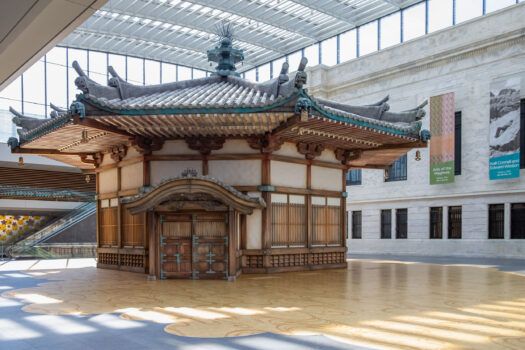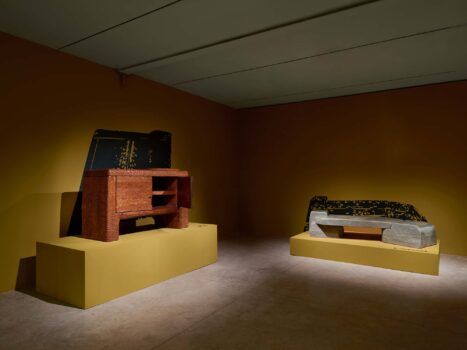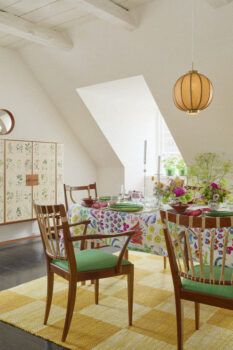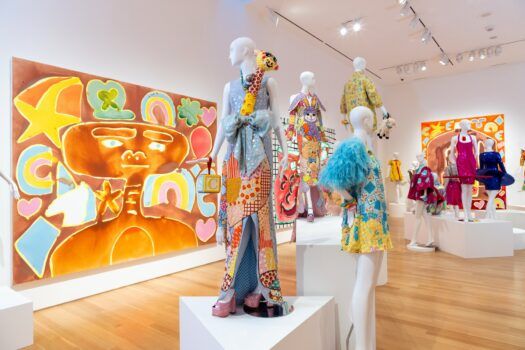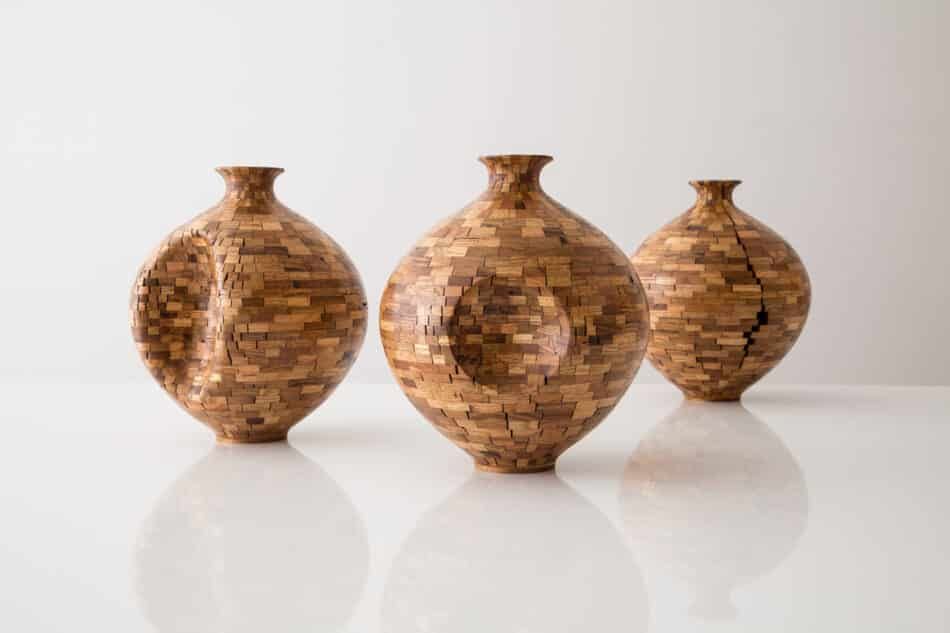
When designing decor to incorporate natural elements, choosing pieces that are not just chic but eco-friendly as well seems like an obvious choice. And thanks to a few sustainable brands that never compromise on style, you can outfit your home in alluring items that align with your environmental values.
The Study asked the makers and dealers behind some of our favorite green-minded collections why the environment is the key player in their design ethos. Here’s what seven of them had to say.
Newton Paisley
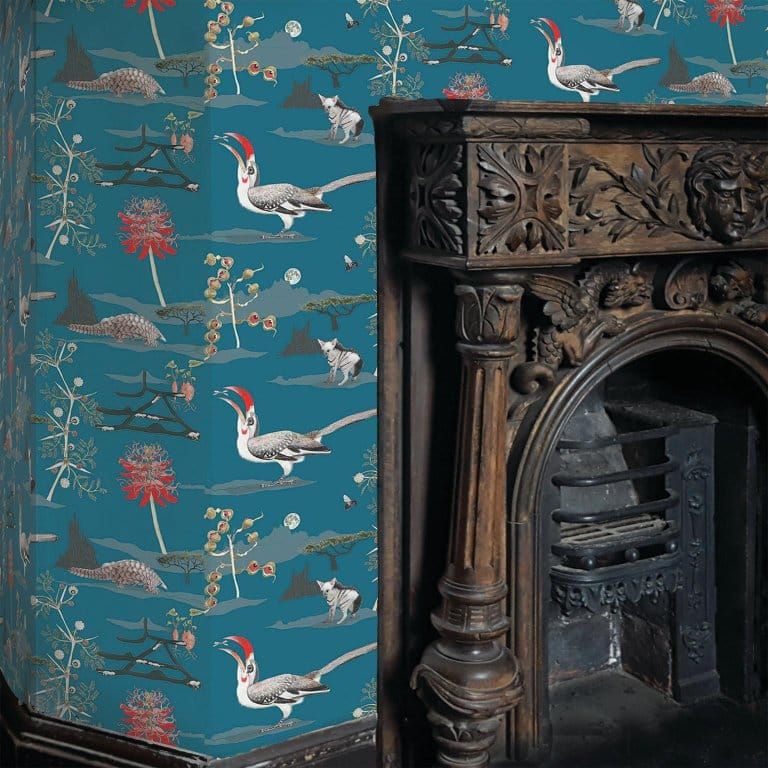
If anyone creates more eco-friendly decor, Newton Paisley director and conservation biologist Susanna Paisley would like to know.
Not only does the English brand create textiles whose hand-drawn designs tell stories of neglected and endangered species, but it also contributes to the preservation of critical wild habitats. Through its collaboration with World Land Trust, 100 square meters are preserved for every meter of fabric sold.
“My design ethos is all about communicating love for wild species,” says Paisley. “As a conservation biologist, I have spent my life studying animals and the plants they depend on and illustrating both in my field notebooks.”
The firm’s textiles are 100 percent linen, because, she explains, this material is the “most wonderfully eco-friendly fiber and needs very few inputs to grow and be processed.”
But the fabrics don’t skimp on style. A color enthusiast, Paisley gravitates toward maximalism in her designs, which are clearly inspired by the harmonious, flowing motifs of 18th-century French and English fabrics and wallpapers.
Grain
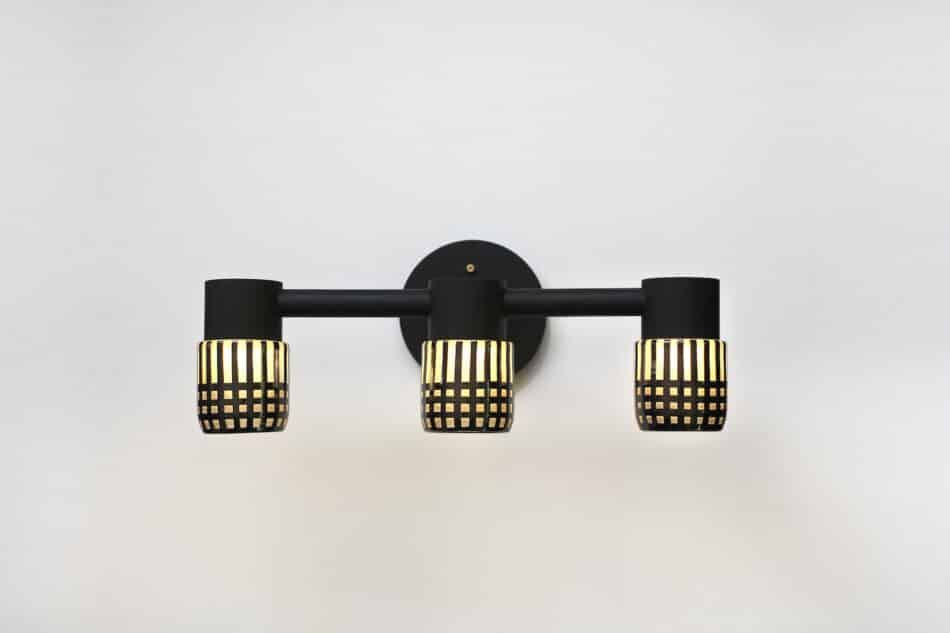
Founded by Bainbridge Island, Washington–based husband-and-wife team James and Chelsea Minola, Grain “puts thoughtful consideration into everything from design to material selection to production to how we staff our studio and our commitment to our local island community,” says James.
All of the practice’s products, including its side tables and decorative screens, are made and sourced ethically. “We consider our work to be living objects that engage, inspire care and root you in time and space,” James explains.
One piece embodying this ethos is the firm’s Dish table. Inspired by hand-carved African stools, it is made from Forest Stewardship Council–certified American ash. The Minolas have also collaborated on a rug and furniture line with the Portland-based painter Shiela Laufer.
Richard Haining
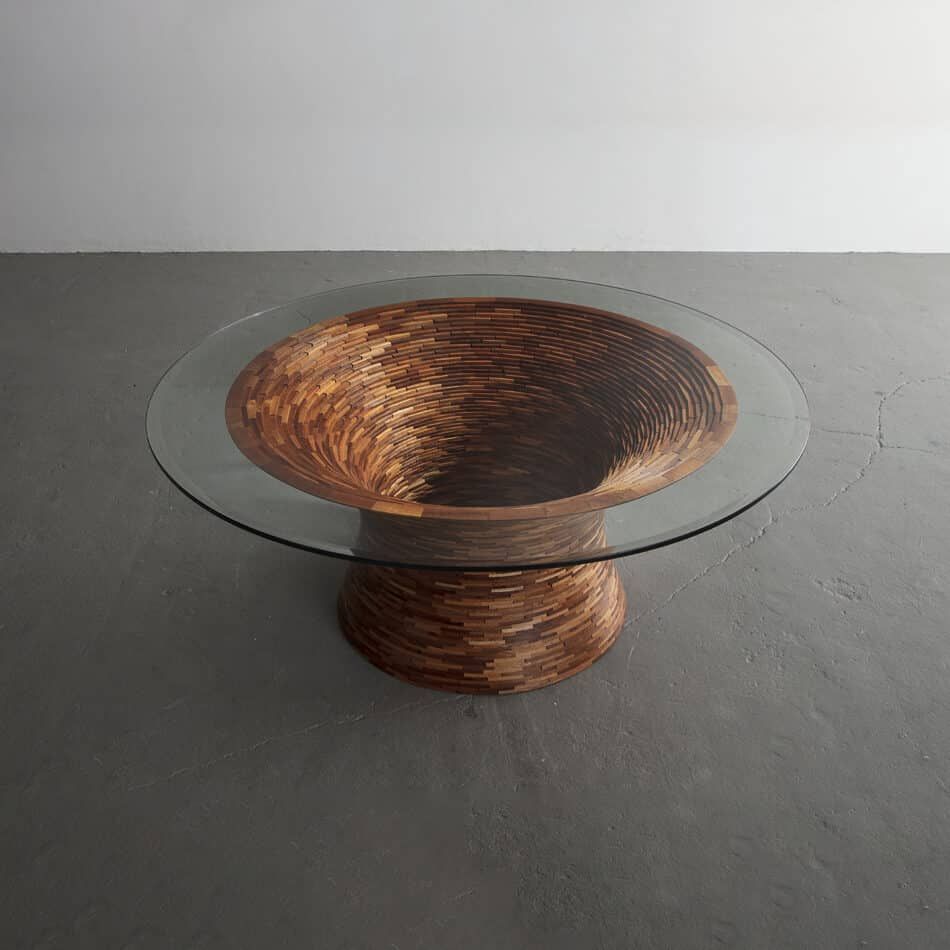
“To the confusion of many, I do not turn nor use a lathe for any of my work,” Richard Haining says, referring to the machine most craftsmen use to cut, sand, knurl and drill wood.
In making his pieces, Haining employs scrap wood, which typically goes to waste, finding beauty in knots, nail holes, mineral stains and other imperfections that others might deem defects, but that he believes are part of a tree’s history, fingerprints of time.
“I begin each piece with a full-scale drawing and a box containing thousands of consistently milled scraps cut to random lengths,” Haining explains. “Piece by piece, layer upon layer, I additively sculpt my work.”
His Stacked collection, which includes mirrors, tables, lighting and cabinets, exploits the raw beauty of natural wood. It “melds with all time periods and styles,” he says. “My pieces have qualities reminiscent of classic forms blended with modern clean lines.”
Woodsport
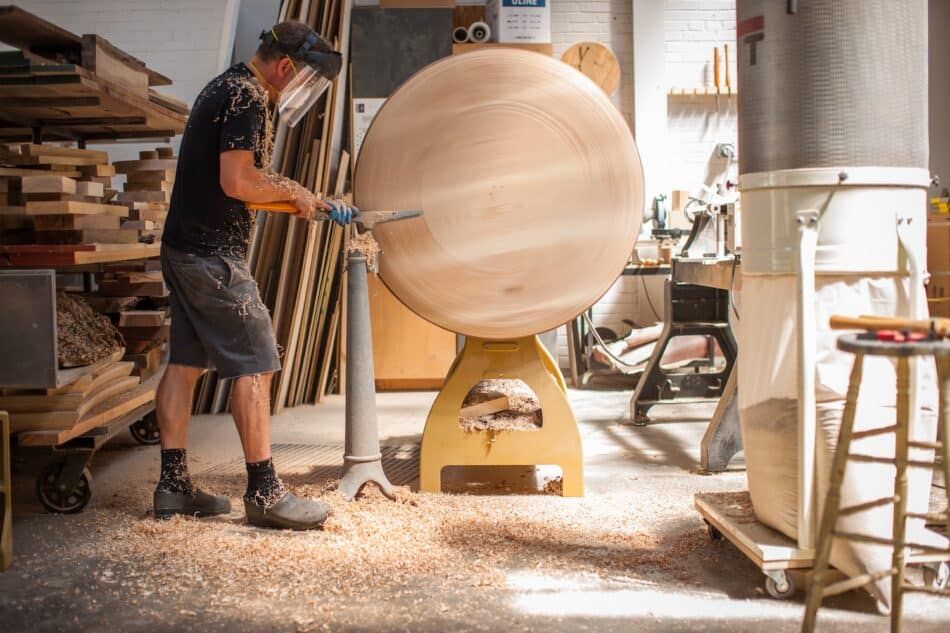
Woodsport makes fine furniture and accessory pieces entirely from salvaged wood. “It’s an absolute given that we all need to do our very best to protect Mother Earth and be less wasteful,” says Scott McGlasson, who’s officially the firm’s owner but prefers the titles furniture maker and designer.
That belief informs Woodsport’s practice, from harvesting storm-felled logs (which McGlasson often does himself) to using every piece of scrap. Even the discarded wood shavings may end up in chicken coops or mushroom gardens.
“All of my turned pieces are cut from templates and then stack-laminated, which makes them quicker and easier to turn but also reduces material waste,” McGlasson says. “And the pieces themselves are built to last, versus going into the landfill.”
As for his design goals, McGlasson says each piece he creates “has to have a purpose to exist, and if it exists, it must be beautiful. I’m big on utility, but I like my designs to have inventiveness and wit.”
New York Heartwoods
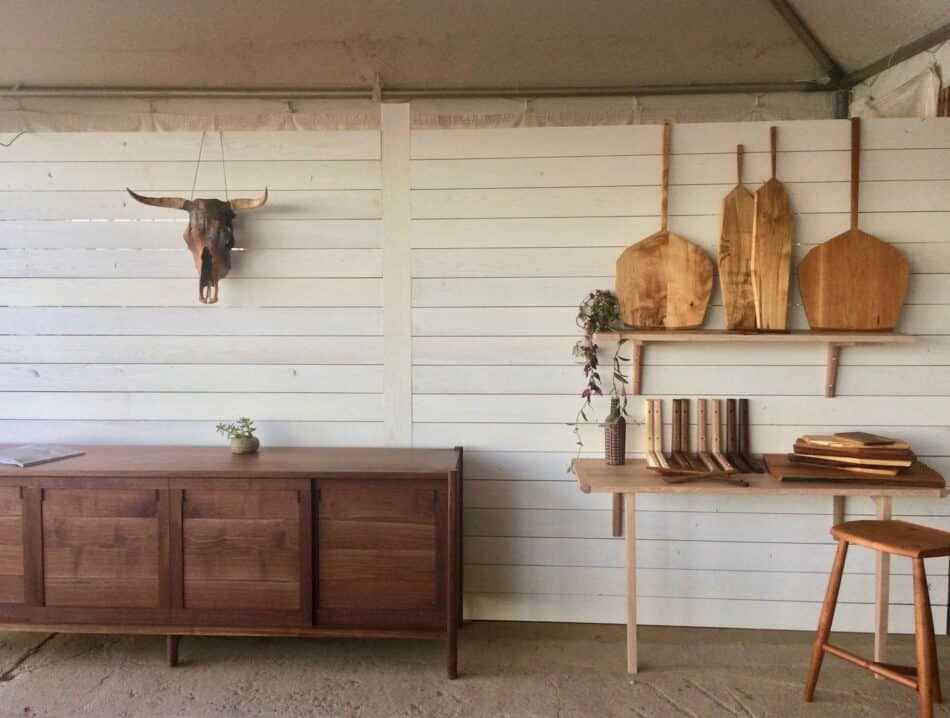
New York Heartwoods creates custom furnishings that are both elevated and ethical. “We make furniture so that forests can grow, using lumber from fallen and urban Hudson Valley trees that would otherwise be chipped, burned or landfilled,” says Megan Offner, the brand’s cofounder.
“Each piece is one-of-a-kind, made by hand and finished without VOC oils,” she continues, “for the health of our clients, our crew and the natural world.”
Offner wasn’t always a green furniture designer. She moved to New York to be a set designer for fashion and advertising print-media companies. But several years into this career, she was shaken by the realization that thousands of trees were being cut down just to end up in dumpsters in the form of magazines.
So, she quit her job and became an environmental advocate. “The search for a livelihood that had meaning, purpose and a positive impact on our natural resources,” she says, “led me to study with a business owner in the Midwest who did similar work to what New York Heartwoods is doing now.”
Pepe Heykoop
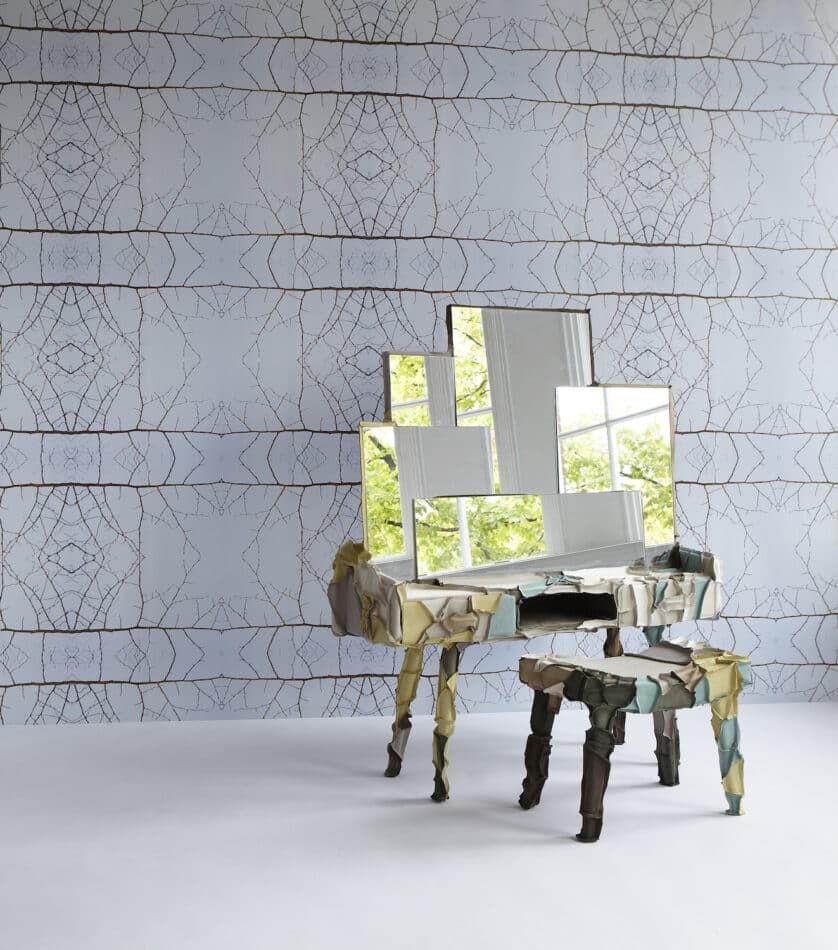
Dutch creator Pepe Heykoop turns waste into wonder. “Most of my designs start with bumping into something I find, such as some random discarded item,” he explains. “And in this quick moment of bumping into something, lots of things happen. It’s either a ‘Yes, I’ll bring it to the studio’ or a ‘No, let’s leave it as it is.’ ”
If the process seems a bit haphazard and serendipitous, that’s because it is. “I don’t draw but just start designing,” he says, “and along the way, there is lots to discover. This is what I like, and to me, that brings and keeps the work alive.”
The pieces in Heykoop’s Skin collection, like the office chair, are both inspired by and made of the leather industry’s discards, which amount to more than 25 percent of the skins employed.
“The amount of leather scraps shocked me,” says the designer, “so I started to collect the offcuts and randomly put them together as a ‘new skin’ to existing objects.”
Nacho Carbonell
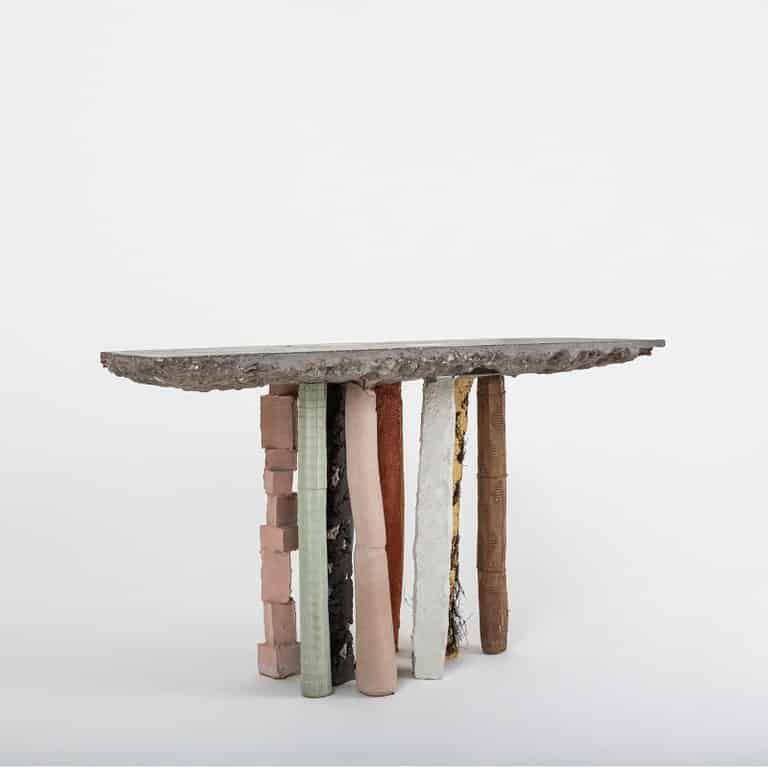
As its name implies, designer Nacho Carbonell’s Fossil collection incorporates the remains of animals, plants and organisms in its avant-garde pieces. A prime example is the console, which is sold at Italian gallery Rossana Orlandi.
It is “made using ‘recycled’ materials that we have around,” explains the Italian designer. “There is no way we could craft each console we make exactly the same way, because every fossil piece serves as a reminder of what we had at that particular moment.”
The colorful pieces are intended to look like rocks and actual fossils, almost as if they had been uncovered by a geologist. Mission accomplished.

